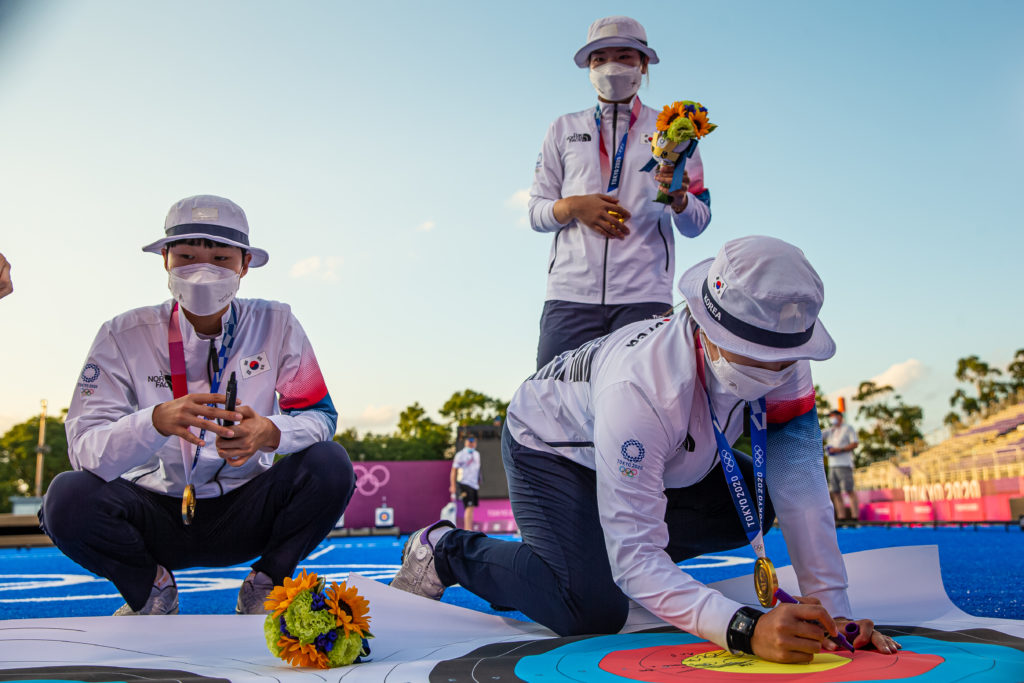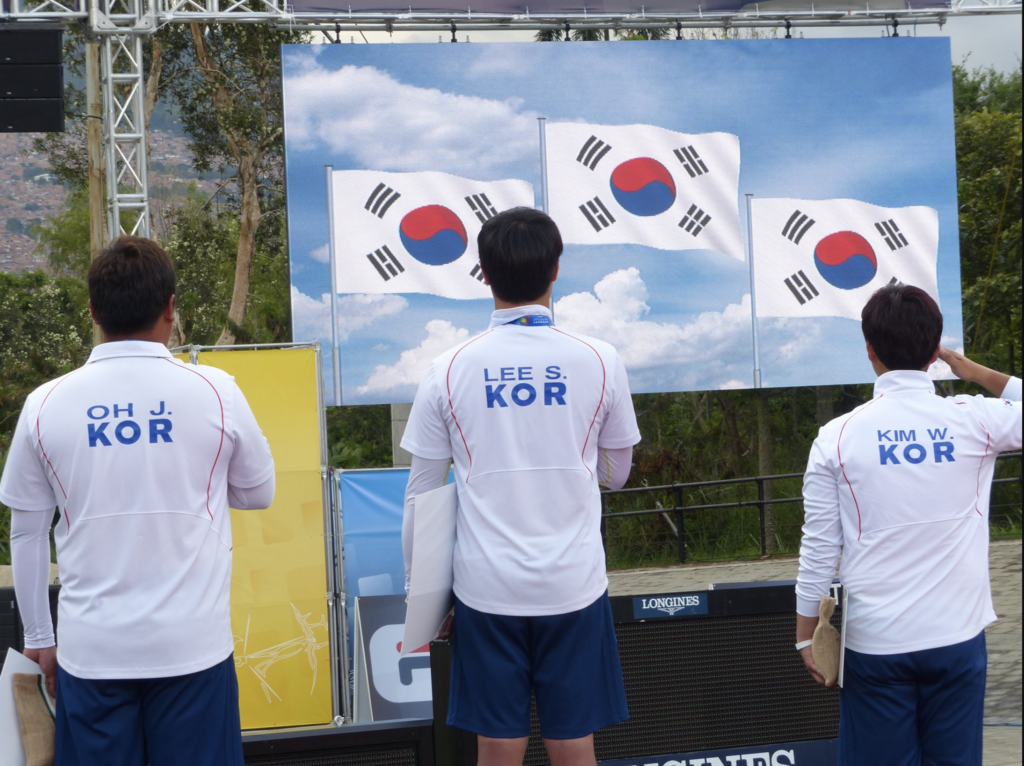What makes the Koreans so successful? Kristina Dolgilevica takes another look at the formidable Korea Archery Association
The Korea Archery Association (KAA) is perhaps the only transdisciplinary organisation dedicated to the sport of archery on the elite level. Its organisational structure and principles are not novel. Some of its key strategic policies derive from the former Eastern Bloc, some are borrowed from the modern West.
Many elite sports today share many structural similarities and are seen as relatively homogenous in their operations; what makes them work in their respective fields is more than just what is ‘on paper’.
In the case of the KAA, the success is often attributed to multiple factors: close connections to and financial support from the Korean business elite – the Hyundai Group in particular; provisions for the development and nurture of full-time athletes, including talent identification programmes; and systematic elite-level competition opportunities, and a particularly rigorous national team selection process.
That list should also cite a close collaboration with sports, medical and technological sciences (domestic and foreign), including equipment and coach development.
But above all, what accounts for the continued success is that from its inception, it has operated on a system of mutually beneficial reward schemes across all levels, from the board of directors to the athletes, and everyone in between. The KAA is very good at adapting and is committed to the principle of continual development and improvement. No organisation is perfect, and all have their internal power struggles and dramas. However, I think that the KAA represents an excellent example of how the relationship between sport and business can work successfully.
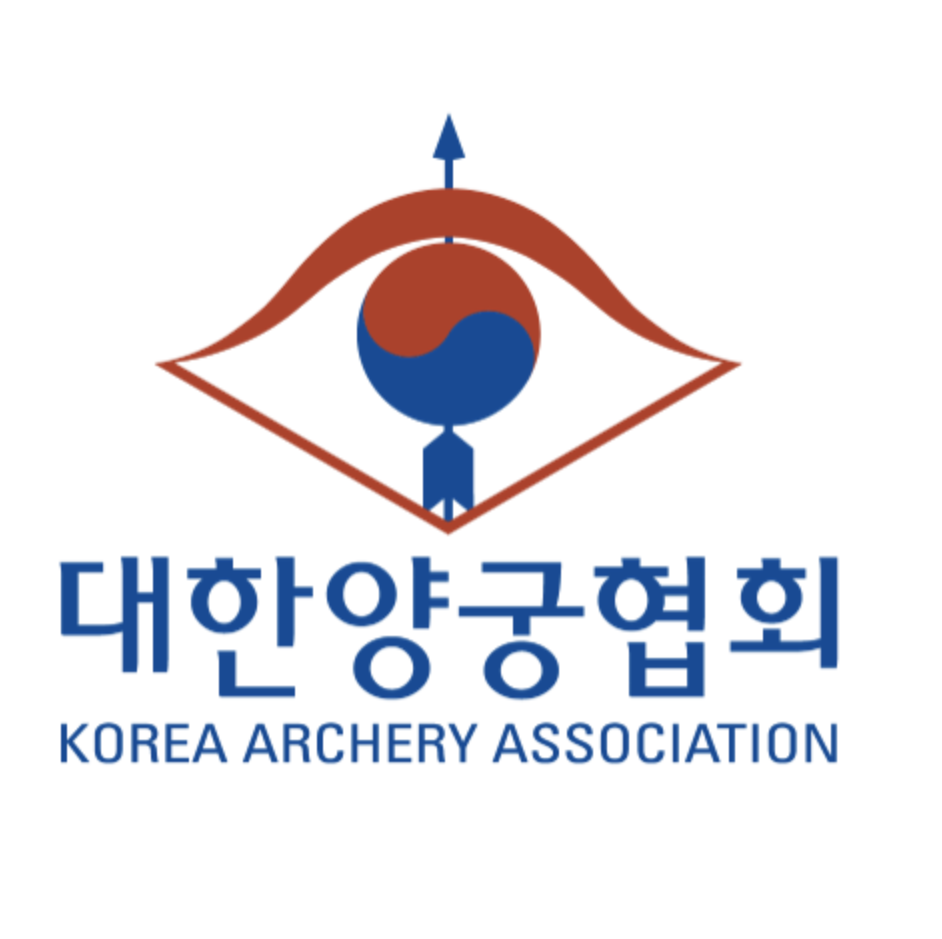
I don’t want to rehash what has already been said or written about the KAA (you can find a great deal of information in the Secrets Of Korean Archery article from Bow in 2019). Sources of information are limited, and opinions often swayed by political considerations. Nevertheless, I would like to share a few reflections on the organisation and some of its policies.
Background
“Physical Strength Is National Power!”; “Strong People Make A Strong Nation” – such were the national slogans of South Korea in the 1970s. Two decades had passed since the Korean War (1950-1953), but the tension between the divided North and South showed no signs of easing.
(One of the areas in which the two could compete, military prowess aside, was in sports.) South Korea was a military dictatorship from the 1960s until the end of the 1980s, and the President from 1963-1979, Park Chung-hee, adopted a military-based approach to the formulation of his government’s policies.
One of the ways in which this was relayed into the sphere of sport was the promotion of physical activities through the school system: boys were encouraged to practise taekwondo, and girls archery.
Park Chung-hee was already building on the groundwork laid out by the “modern” archery pioneer, Sook Bong-un, a middle school PE teacher, who persuaded the Korea National Archery Association (KNAA), responsible for traditional archery only, to accept this modern discipline. Under official guidance, he was able to establish the first international middle school archery clubs, run more workshops and coach development courses.
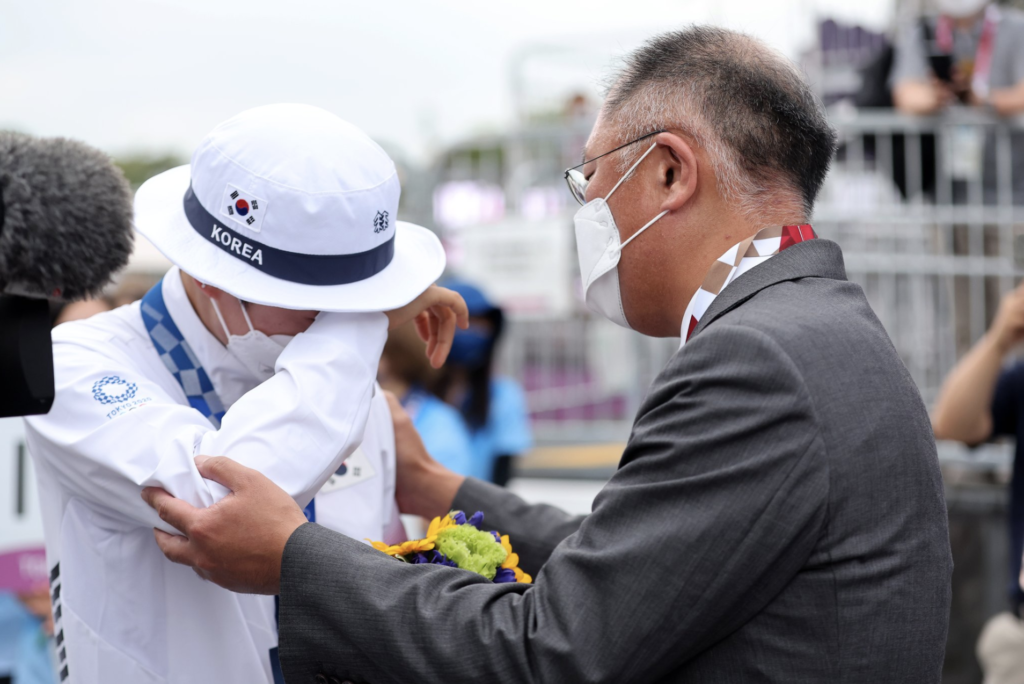
The first national junior successes quickly followed, the numbers of archers grew rapidly, and talent pools of young athletes filled up fast. With this government backing, modern archery became an official event at the 3rd National Junior Sports Festival of 1974.
A break from the traditional association was inevitable, as the existing structures could not satisfy the elite performance needs, nor could they fulfil the grand ambition to achieve international and Olympic archery success. This conflict of interest and the subsequent power struggles resulted in the birth, in March 1983, of the Korea Archery Association, and the separation of the traditional and modern styles.
Business steps in
It is a common belief that the business tycoons involved with the KAA are serving their own interests, and it is true that they receive useful tax breaks in return for injecting cash into the KAA; many other Korean sports are funded in a similar way. All five presidents of the KAA have been connected to the Hyundai Group, which has interests including steel, the motor industry and logistics. The linking of the KAA to Hyundai at its inception turned out to be a clever strategic move.
As one secretary general of KAA recalled: “We thought that nobody would invest in the sport of archery because it is an unpopular sport (compared to football or baseball), so we were lucky that the Hyundai Group took charge of the KAA. Since then, Korean archery has started to spark medal-winning success.”
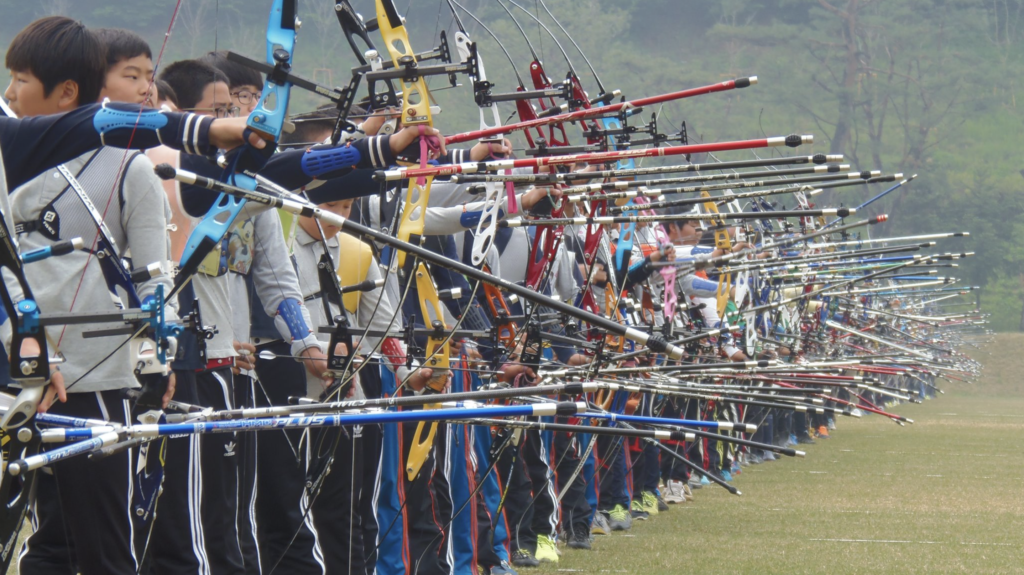
The current president of the KAA, Chung Eui Sun, was re-elected for a fifth term in November 2021. His inauguration as president in 2005 was accompanied by a contribution of 1.5 billion KRW ($1.2 million) from Hyundai. Other funding came from the Korean National Treasury, and other government, national, and independent bodies.
Following the Sydney Olympic Games of 2000, the Korean government adopted a ‘selection and concentration’ approach to funding, focusing on sports likely to win a medal at the next Games. Archery was on – and has stayed on – that list, and it continues year after year and cycle after cycle to justify the generous influx of cash.
Korean people are generally business-minded, but they are also proud people who like to pay homage to tradition, which they rarely fail to mention. In his current official address, president Chung Eui Sun defines the cultural value of the sport and makes a firm and proud statement on the strategic direction
of the association: “Archery, which began along with the history of mankind, has been a proud traditional martial art, handed down with the long history of the Korean people, and has the soul and the spirit of the Nation… the Korea Archery Association will spare no effort to further inherit and develop the splendid honour and tradition it has built over the years.”
He finishes the address with the following line, which I believe perfectly epitomises the Korean mentality, that typically Korean sense of obligation, and the attitude towards one’s place in society: “All of our archers will do their best to live up to your expectations.”
Much has been made of ‘The System’, an ever-evolving blueprint on how to achieve success at the Olympic and Asian Games, which has apparently resulted in an operations manual 700 pages thick. But
the cultural influences are perhaps even more interesting. The structured culture of the South Korean people, with the long influence of decades of military culture as well as a business-focused attitude, values efficiency and productivity above all. These are the qualities that will be rewarded. Every individual has an allotted role, but if they do not live up to expectations, they will quickly be replaced by a worthier candidate.
This principle is even better exemplified in the national Olympic team selection process, where being a decorated archery veteran or having innate talent will not suffice. You must prove your worth every time – that is to say, you must assume the role of the defending champion. This strict policy is best observed in action at every team selection, when we see some of our favourite names “unexpectedly” move down the chart, giving way to the newcomers.
Luckily, the athletic pool of talent is still big, and with the score margins incredibly close, it is anybody’s game. (The lack of sentimentality in the process even appears to surprise the Korean media, who seem taken aback not to see established stars with proven winning ability appearing again at big events.)
Promoting the sport
Coach development was and still is largely workshop and seminar led. Before the 1996 Atlanta Games, coach courses were not the priority in the policy development. These were organised by the KAA and were mostly free. Soon after the Atlanta games, the decision was made to fund coach development, “marrying” the sports and medical sciences closer together with the experienced elite-level archers.
The KAA also funds the Association of Korean Archery Coaches, comprising former elite athletes, and Myung Goong Howe, a group of female archery medallists. These veteran ladies have a special role, coaching and athletic development aside. Since 2009, the group has been tasked with promoting the sport to school groups, and recruiting young children.
A typical introductory session lasts for just under two hours, but can be extended or shortened, depending on the ages and the number of participants. The first 15 minutes are spent on the introduction of the medallists and the watching of highlights from the Olympic and Asian Games. The next 25 minutes are spent on a safety demonstration, a warm-up, and basic posture exercises, including the stretch-band training. An experienced archer from the school club then demonstrates her shooting, and the group is then invited to shoot at some balloons.
The last half an hour is spent on autograph signing and motivational statements. It is, in my opinion, one of the most effective strategic policies – what child wouldn’t be inspired by a real-life World or Olympic champion? Shaking their hand, touching the gold medal… motivational sports statistics show that school children and young athletes are inspired more by local and domestic personalities – someone from their school, someone they know or have met in real life – and are much more likely to join or be driven to succeed in the sport: “If she/he can do it, so can I.”
The money
Many have remarked on the fact that only the very top archers get the salaries worth fighting for, while the starting salaries for a professional team shooter are only in the region of $14-20k. However, this figure excludes significant perks and benefits.
Annual salaries for more experienced professional athletes across various sports in South Korea can reach and exceed $60,000, without taking into account substantial bonuses. The fact that these payment tiers exist, and that there are extra opportunities, including advertising, for enlarging one’s income, is generally a sufficient incentive.
The higher-grossing sports of Korean golf and baseball are other examples of how business and sport can effectively coexist and be mutually beneficial. One-off bonuses, benefits and pay-offs in archery contribute to the competitive environment. Many Olympic athletes find even more enticing and motivating the promise of a lifetime incentive – the Performance-Enhancing Research Pension awarded to the medal winners in international sporting events.
A month after her three-medal sweep at Tokyo 2020, 20-year-old An San began to receive a monthly lifetime pension of 1 million KRW (around £620). As well as a large bonus from Hyundai and a brand-new electric car, An San will additionally receive the following one-off rewards: around or close to £97,000 from the Korean Ministry of Culture, Sports and Tourism, £60,000 from the Korea Sports Promotion Foundation, and more of the same from other ministries, investors and advertising contractors. Winning international medals is very good for business.
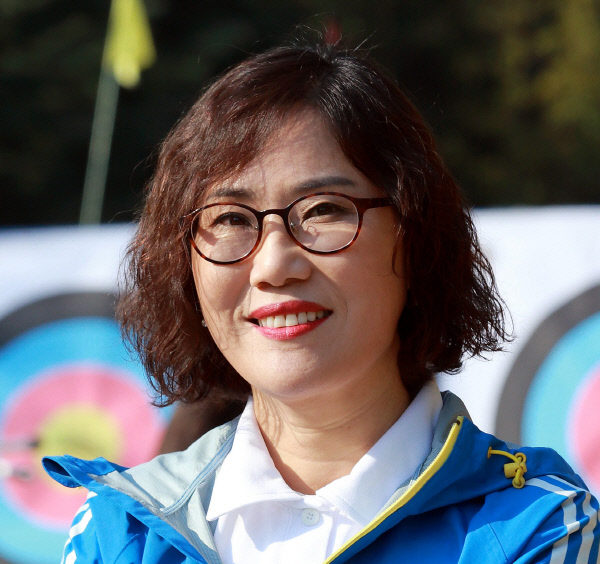
Regardless of the size of the lifetime pension, it is a desirable social safety net, especially considering that most athletes will retire before they turn 30. As with Olympians worldwide, you can retire from sport, move on with your life and begin university or a new career in business, politics or television, to which past sporting achievements can only add kudos.
In my private conversations with some South Korean coaches, I learned that they too receive bonuses for the medals their athletes bring from the World and the Olympic events, as well as some lifetime incentives or royalties – though figures were not disclosed. Thus, the same competitive climate is created amongst the coaches, especially as there are many opportunities (with salary incentives) for them to progress from school to university to pro teams and beyond.
Incentives such as lifetime pensions not only attract many of those willing to participate, but they also boost performance and productivity, and create the right climate where the willing participants are prepared to get out of their comfort zone and push themselves harder.
As a result, many will exceed expectations (not only in terms of scores), and raise the bar for the rest; and so it will continue. For that to happen, the organisation and its structure must stay reliable, yet progressive, and must continue to feed “the machine” with what it needs. Sounds easy, doesn’t it?


